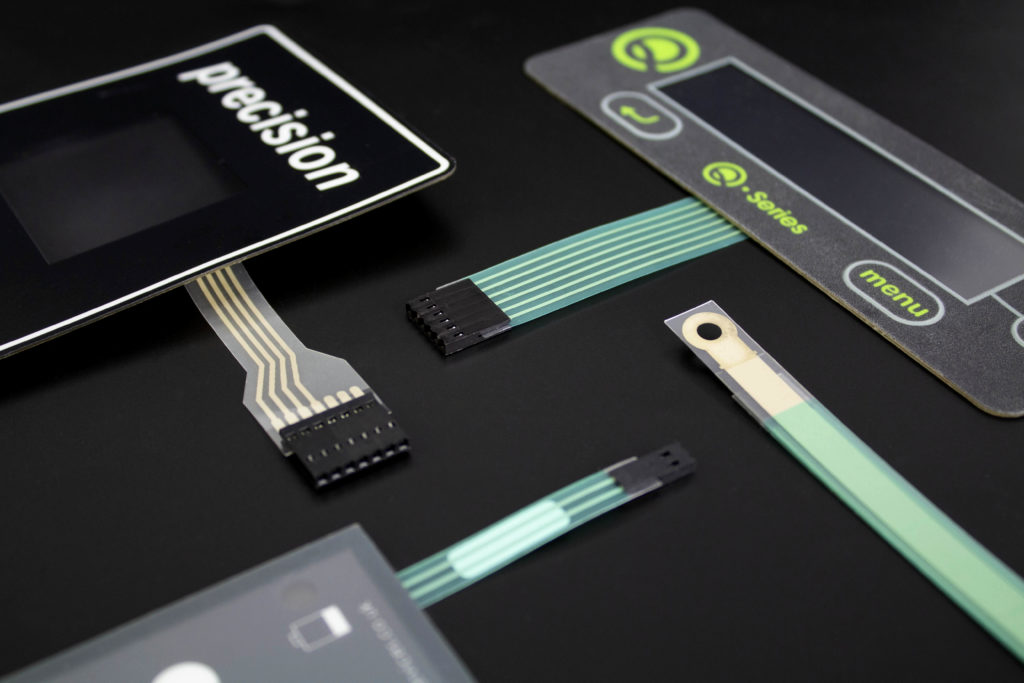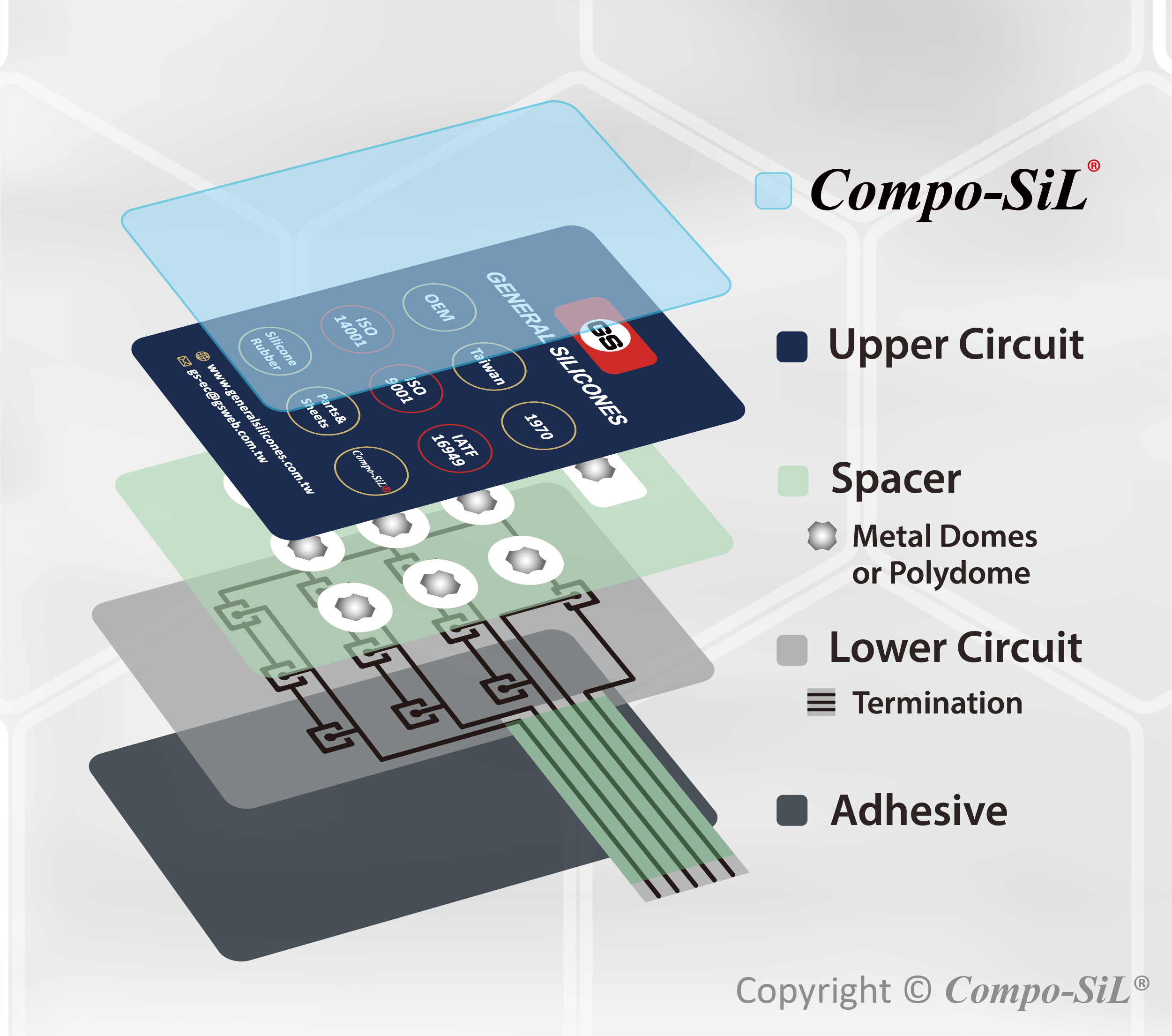Understanding the Value of Membrane Switches in Interface
Membrane switches are important components in the design of effective customer interfaces, assisting in not only performance however also boosting aesthetic appeal and customer communication. As we check out the future fads and various advantages linked with Membrane technology, it ends up being clear that these switches are extra than simply elements; they stand for a convergence of innovation and functionality.
What Are Membrane Buttons?

The spacer layer, which consists of glue residential properties, enables the splitting up of the circuit layer from the overlay, making sure that the button remains in a non-activated state till pushed. When stress is used to the overlay, it compresses the spacer layer, linking the void and completing the circuit in the underlying layer. This style not only lowers the physical space required for traditional mechanical switches however also improves the longevity of the device, as Membrane switches are typically resistant to dust, moisture, and other ecological factors.
Frequently located in applications ranging from customer electronic devices to clinical gadgets, Membrane switches are essential to modern-day technology, giving a efficient and user-friendly user interface that aligns with modern layout requirements.
Advantages of Membrane Buttons
While many switch technologies exist, Membrane Switches deal distinctive benefits that make them particularly preferable in numerous applications. One of the key advantages of Membrane buttons is their portable layout, which enables for space-saving implementations in devices where realty is limited. Their slim account not only improves visual charm yet also assists in light-weight construction.
One more substantial benefit is their resistance to ecological elements. Membrane buttons are normally secured versus wetness, dirt, and pollutants, making them excellent for usage sought after environments, such as clinical tools and industrial devices. This sturdiness prolongs the life expectancy of the button, lowering maintenance prices and boosting reliability.
Additionally, Membrane buttons can be personalized to meet specific design demands, integrating special graphics and shades that improve user interaction. Their tactile responses options can likewise be customized to offer a satisfying user experience. Furthermore, Membrane switches are cost-effective, particularly in high-volume applications, as they can be produced successfully.
Applications in Different Industries

In the customer electronic devices field, Membrane switches are prevalent in tools such as microwaves, cleaning devices, and remotes. Their tactile responses and aesthetic alternatives boost user experience while offering a streamlined, contemporary look. Additionally, automobile makers utilize Membrane switches in control panel controls and infotainment systems, where area is restricted, and individual engagement is vital.
Additionally, the commercial field leverages Membrane switches in control panels for equipment and equipment, enabling instinctive procedure in usually rough environments. Their resistance to chemicals and wetness makes sure my link durability and reliability in these applications. In general, the flexibility of Membrane Switches adds considerably to their widespread usage, making them essential in numerous technical domain names.
Layout Factors To Consider for Membrane Buttons

When developing Membrane buttons, several key factors to consider need to be taken into consideration to ensure ideal performance and individual Full Report experience. The selection of products is critical; selecting long lasting, high-grade substrates can boost the button's durability and resistance to environmental variables such as wetness and temperature level fluctuations.
Second of all, the style of the graphic overlay must focus on clarity and convenience of use. Icons and text should be readable, and the format needs to assist in intuitive interaction (membrane switches). Furthermore, tactile responses is essential; integrating a tactile dome or other devices can boost the user experience by offering physical verification of activation
Another essential element is the button's electrical efficiency. Developers have to make sure that the conductive traces are properly designed to reduce resistance and prevent signal interference. This involves evaluating the needed actuation force and ensuring compatibility with the digital parts they will certainly interface with.

Future Patterns in Membrane Innovation
As technology remains to advancement, Membrane switches are positioned to progress considerably, driven by developments in materials and more tips here manufacturing methods. One emerging pattern is the incorporation of sophisticated materials, such as versatile substrates and conductive inks, which improve sturdiness and reduce the total weight of Membrane buttons. These products not just enhance the tactile action however likewise enable the style of buttons that can withstand harsher environmental problems.
Additionally, the combination of touch-sensitive innovations is changing traditional Membrane Switches into even more interactive customer interfaces. Capacitive touch sensing units embedded within Membrane button panels can provide a much more intuitive and receptive customer experience, straightening with the expanding demand for smooth, modern designs in customer electronics.
Furthermore, advancements in printing methods, such as electronic and 3D printing, enable quick prototyping and modification of Membrane buttons. This adaptability enables suppliers to react faster to market needs and customer choices.
Lastly, sustainability is ending up being a considerable emphasis, with manufacturers discovering green products and processes. As these fads unravel, the future of Membrane modern technology promises enhanced functionality, visual allure, and environmental duty, solidifying their role in advanced interface throughout various markets.
Verdict
In final thought, Membrane Switches represent a crucial element in the design of individual interfaces, combining capability with aesthetic flexibility. As developments in technology continue, the development of Membrane buttons is anticipated to additional refine user interfaces, driving development and boosting use in a significantly intricate technical landscape.
Membrane switches are indispensable components in the layout of effective individual interfaces, facilitating not only capability but also enhancing visual allure and individual interaction.Membrane Switches serve as an essential element in various user interfaces, assisting in a smooth interaction in between users and digital devices.While various switch technologies exist, Membrane Switches deal distinctive advantages that make them specifically desirable in different applications.Furthermore, Membrane switches can be customized to fulfill particular layout requirements, including unique graphics and colors that boost user interaction.In final thought, Membrane Switches represent a crucial element in the design of customer interfaces, integrating functionality with visual versatility.